#Leuchtenberg
Text
Two in one...

Transformable tiara with lily motif belonged to the Leuchtenberg family, descendants of Empress Josephine, c. 1830. The large hexagonal emerald solitaire can be worn as a brooch.
#Tiara#diamond tiara#antiquejewelry#vintageandantiquejewelryonline#vintage jewelry#1830s#Leuchtenberg#emerald#diamond#brooch#jewelry for women#antique
369 notes
·
View notes
Text
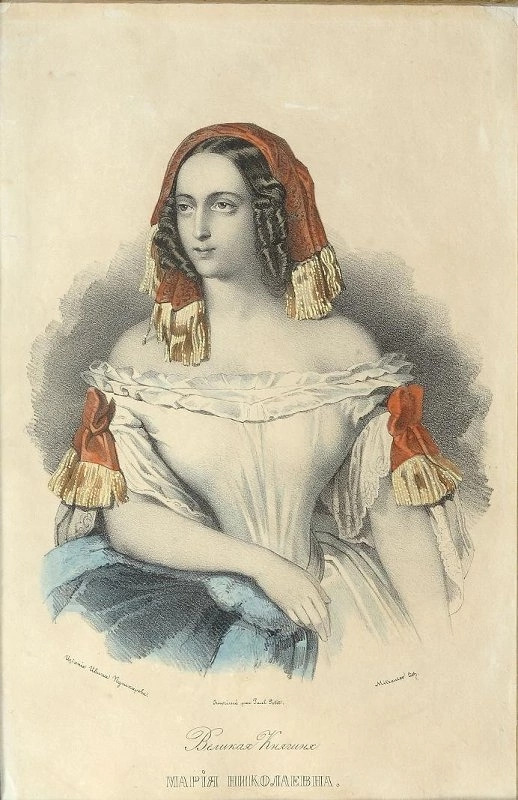
Grand Duchess Maria Nikolaevna of Russia, Duchess of Leuchtenberg.
62 notes
·
View notes
Photo

Ornement central du diadème "Leuchtenberg" transformable en broche de Jean-Baptiste Fossin en or, argent, émeraudes et diamants (circa 1830-40) à l'exposition “Végétal” orchestrée par Chaumet à l'Ecole des Beaux-Arts de Paris, juin 2022.
#expos#inspirations bijoux#bijoux de tête#végétal#diamant#emeraude#Fossin#Chaumet#Leuchtenberg#EcoleBeauxArts
2 notes
·
View notes
Text

Castle Leuchtenberg, Germany, once home to the landgraves of Leuchtenberg, who surrounded the borders of their fief with mysterious monolithic shrines. The main line died out in 1646 but the castle was kept by the dukes of Bayern-Leuchtenberg. In the 19th century, the title was presented to Eugène de Beauharnais, Napoléon's stepson.
1 note
·
View note
Text




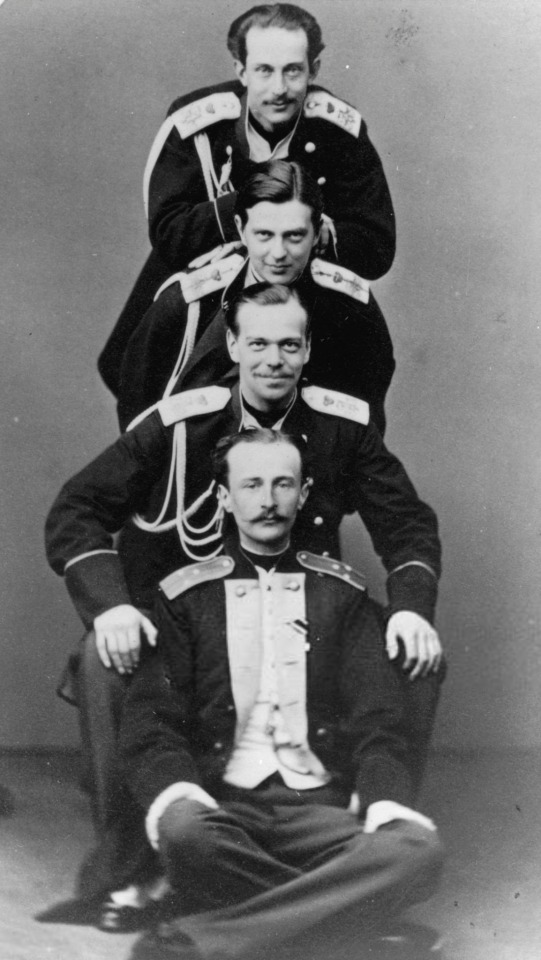

St. Petersburg 1865
Grand Dukes Alexander Alexandrovich, Vladimir Alexandrovich with their cousin Prince Nicholas Maximilianovich and Prince Albert of Saxe-Altenburg.
#Alexander alexandrovich#Vladimir Alexandrovich#Nicholas Maximilianovich#Prince Albert of Saxe-Altenburg#1860s#1865#romanovs#russian empire#tsar alexander iii#grand duke Vladimir#alexander iii#Duke of Leuchtenberg#Saxe-Altenburg
134 notes
·
View notes
Text


Letter from Duchess Ludovika in Bavaria to her niece, Countess Théodolinde of Württenberg (née Princess of Leuchtenberg):
Munich, 20 April, 1846
... I would not have thought of taking on a sub-governess, as I have an excellent nanny for the younger girls, with whom my Charles [Karl Theodor] is still with; but Hélène's character makes me wish to separate her from her sister Elise [Elisabeth]; without being mean, she has nevertheless influenced her sister, who is much gentler and of a very conscientious nature, but the elder one undermines her, and I am convinced that it is necessary to separate them as much as possible. My intention is: that the governess should manage the education, but so that she can take care of each one separately, I would like to take Mlle Richelle [?] for fear of detouring from one to the other during this time. Also to take charge of French entirely, and to convey the lessons of M'Zesage [?]. These are my intentions, but I can't make up my mind until I've heard back from the lady to whom I'd like to entrust my daughters. In the meantime I forgot to mention the reason for all these changes, which is that Miss Nembald is marrying Count Spreti, and will be leaving my daughters in the course of the summer! Thank God I always have good news from Louis [Ludwig Wilhelm], who is in such good hands! It's a great reassurance, and the 5 [children] I have left give me, as you can see, no shortage of work. For my Charles, I have the good fortune to have an excellent nanny capable of teaching him German, French, arithmetic etc. like a man, and who imposes more on him than a governor ever did on his brother, because he loves her very much - but it is not a small thing to rule this world! because other than that I have 2 teachers attached to our house who follow us on the campaign, one teacher of religion and the other, universal, for everything, because he teaches everything we can ask including Greek and Latin, for the boys and music. I kept him when Louis left, as he had only been with us for a few years. If he had had him earlier, he would have taken his education in a different direction, which would undoubtedly have been more successful...
#how did elisabeth became the wild child and helene the quite one in pop history howwww#anyway interesting letter because it shows ludovika was the one in charge of her kid's education#and it also shows it was a pretty conventional education for the time. note how greek and latin was only ''for the boys''#and also how the nanny can teach ''like a man'' because she *check's notes* knows maths#btw the letter was in french! this doesn't seem to have been usual for ludovika since all the other letters are written in german#with the exception of this and two others for theodoline. you can take a beauharnais out of france but not france out of a beauharnais#ludovika of bavaria duchess in bavaria#theodolinde of leuchtenberg countess of württenberg#empress elisabeth of austria#karl theodor duke in bavaria#helene in bavaria hereditary princess of thurn und taxis#duke ludwig wilhelm in bavaria#house of wittelsbach
24 notes
·
View notes
Text

Queen Josefina of Sweden and Norway by Sophie Adlersparre (oil on canvas, 1856)
Joséphine Maximiliana Eugenia Napoleona of Leuchtenberg was born in March 1807 in Milan, the daughter of a French general.
On 23 August 1822, Crown Prince Oskar came on a visit to Eichstätt in Bavaria, where he met Joséphine. The Crown Prince fell in love with her, and asked for her hand in marriage a few days later.
On 19 June 1823, her Swedish marriage ceremony took place at Stockholm Cathedral. Her official name became Josefina.
Josefina contributed towards the construction of the first Catholic church in Stockholm in 1837, and towards establishing the Catholic congregations in Gothenburg and Kristiania. She established and supported many philanthropic associations, including the Josephinahemmet home in Blackeberg, Stockholm, and she worked hard to help poor mothers and widows with children.
When Oskar ascended to the throne in 1844, Josefina gained increased political influence. She was the king's only truly loyal advisor.
Photo: royalpalaces.se
#swedish royal family#queen josefina#duchess of södermanland#joséphine de leuchtenberg#joséphine of leuchtenberg#princesse joséphine de leuchtenberg#princess joséphine of leuchtenberg#house of beauharnais#art history#official portrait#swedish royalty#swedish history#royal history
9 notes
·
View notes
Note
Were the children of Eugène de Beauharnais born in Milan born at Villa Bonparte?
Hi, @sunjournal941 , and I'm so very sorry to have neglected this question so very long. I'm lazy, old and slow (in addition to fat and ugly, which is not even as easy as it looks, so I consider it an accomplishment!)
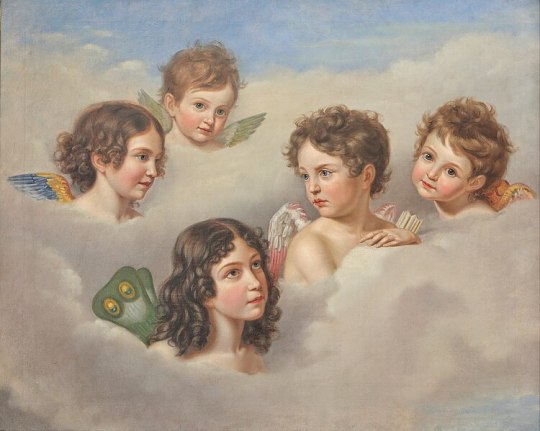
As far as I can tell, the first four children were indeed born in the Villa Bonaparte, or today Villa Reale, in Milan. At least the Villa Bonaparte was the official residence of the vice-regal couple, and Auguste always gave birth in Milan.
The only of her "Italian" children not born in Milan is the little lady at the top of the angelic group in the painting by Stieler above. That's Theodolinde, called Linda in the family. Before she even took her first breath, she was already the cause for much drama between her parents and His Imperial Majesty Naps in Paris, as Napoleon insisted on Auguste coming to Paris for her confinement, which Eugène and Auguste (wrongly?) understood as an act of distrust towards Eugène and as Napoleon trying to get his hands on Eugène's family in order to make sure he would not switch sides. In a rather snippy letter to Napoleon Auguste informed him that she was not going to leave her mistreated husband, but was rather going to join him at the front, in fortified Mantua. And in Mantua Theodlinde was born, during the final days of the war of 1814, while Napoleon in Paris was busy abdicating.
The other two children, little Caroline who would die only a few months after her birthday, and this young gentleman:

Maximilian de Beauharnais, future Duke of Leuchtenberg, were already born during exile, in Munich. They're obviously named after their Bavarian grandparents.
Thank you for the Ask! And sorry once more for being so very late with everything!
#napoleon's family#eugene de beauharnais#auguste von bayern#the leuchtenberg kids#leuchtenberg children
11 notes
·
View notes
Text

13 June 2015 | King Carl XVI Gustaf of Sweden and Queen Silvia of Sweden seen departing after marriage ceremony in Stockholm, Sweden. (c) Andreas Rentz/Getty Images
#Queen Silvia#Leuchtenberg Sapphire Parure Tiara#King Carl XVI Gustaf#Sweden#Carl Philip and Sofia#tiara#weddings#2015#Andreas Rentz#Getty Images
4 notes
·
View notes
Text




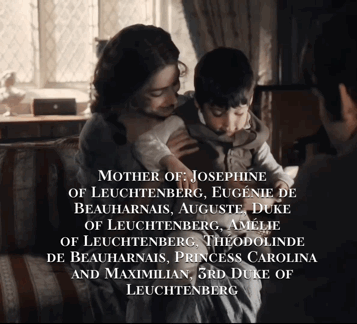
she was described as very amiable, charming and remarkably beautiful. She was an exemplary wife and mother, and she was well-loved by her family and her in-laws [she is also the half-aunt of empress elisabeth “sisi” of austria] 💌
fc: mine
#princess augusta of bavaria#princess augusta#princess of bavaria#duchess of leuchtenberg#morwenna chynoweth#morwenna carne#poldark#poldarkedit#ellise chappell#period drama edit#period edit#history edit#fancast#house of wittelsbach
3 notes
·
View notes
Text

#colorization#colorized photo#colorized#victorian#1850s#Duchess Maria of Leuchtenberg#Prince George of Leuchtenberg
4 notes
·
View notes
Photo
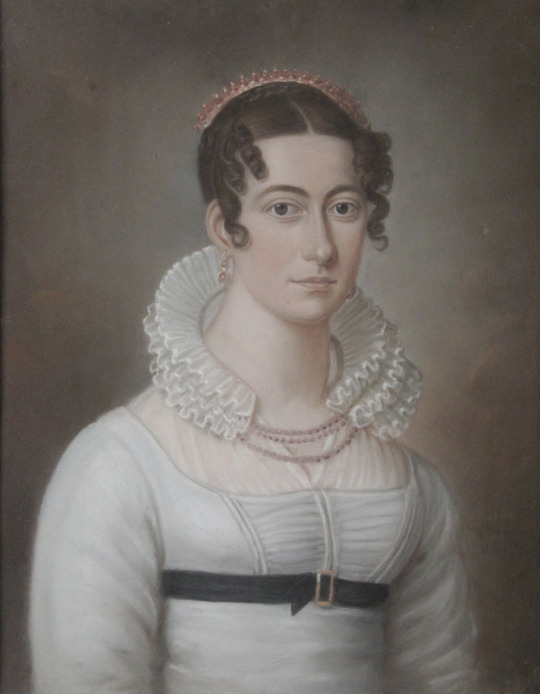


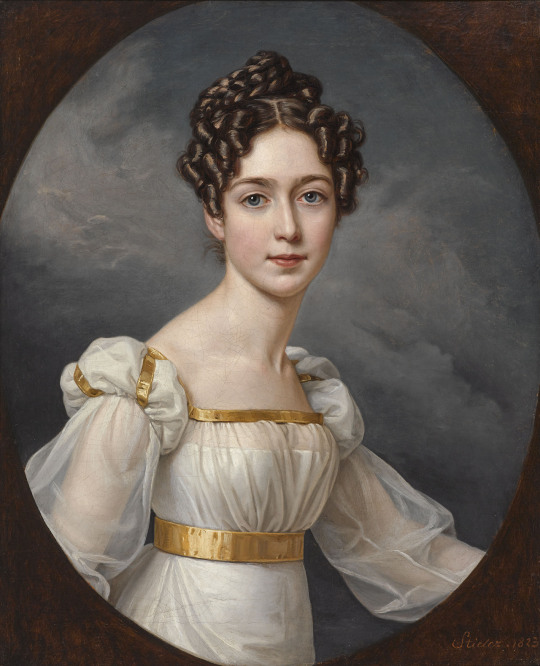
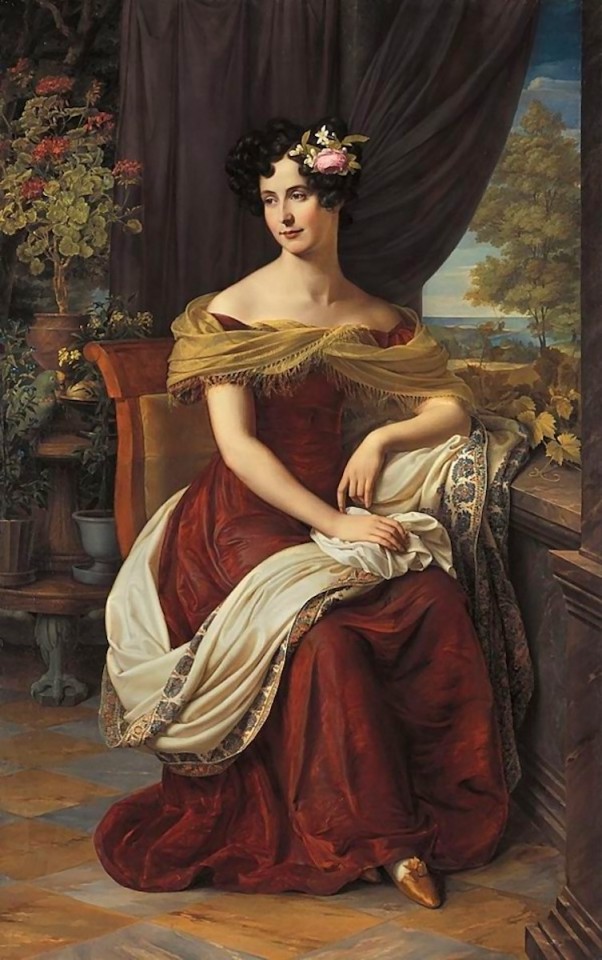

A tour of the 1820s -
Top left: 1820 Jeune fille à la parure de corail by "Robert" (Osenat - 24Jul22 auction Lot 148). From osenat.com/lot/128661/18840722-ecole-francaise-du-xixe-siecle 1878X2412 @144 4Mp.
Top right: 1820 Lady of the Petre Family Playing the Guitar by Joseph Karl Stieler (location ?). From tumblr.com/blog/view/lenkaastrelenkaa 628X800 @72 87kj.
Second row: 1822 Young Lady by Wilhelm August Rieder (Museum Karlsplatz - Wien, Austria). From tumblr.com/blog/view/history-of-fashion.
Third row: 1823 Josephine of Leuchtenberg by Joseph Carl Stieler (location ?). From tumblr.com/blog/view/catherinedefrance 1280X1578 @72 674kj.
Bottom left: 1824 or ca. 1826/1827 Fanny Ebers, mother of Egyptologist Georg Ebers by Wilhelm von Schadow (location ?). From tuttartpitturasculturapoesiamusica.com/2017/11/Wilhelm-von-Schadow.html; enlarged 753X1200 @72 230kj.
Bottom right: Lady, full length, wearing a black dress, holding a comb and embroidery by Louis Hersent (Sotheby's - 31Oct17 auction Lot 453). Removed a few spots with Photoshop 2880X4180 @72 530kj.
#1820s fashion#restoration era fashion#Romantic era fashion#Biedermeier fashion#Robert (artist)#tiara#neckline ruff#V neckline#low Empire waistline#waist band#full sleeves#Joseph Karl Stieler#scoop neckline#quarter-length sleeves#Wilhelm August Rieder#side curl coiffure#long sleeves#pleated bodice#Joseph Carl Stieler#Josephine of Leuchtenberg#square neckline#sheer outer sleeves#natural waistline#close skirt#wrap#Fanny Ebers#Wilhelm von Schadow#hair flowers#Louis Hersent#off shoulder V neckline
10 notes
·
View notes
Text
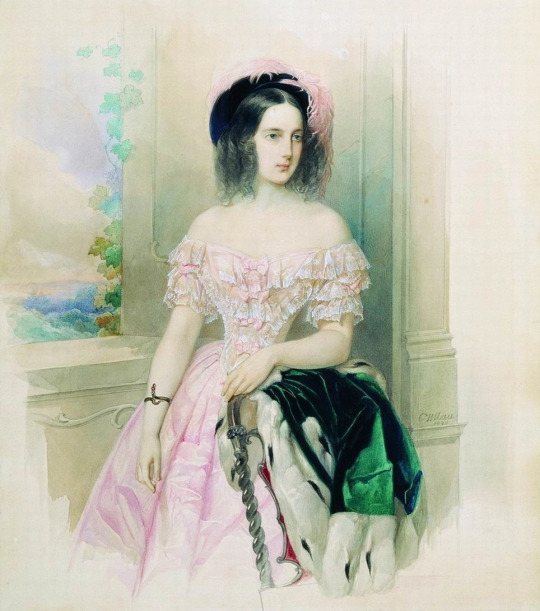
“The eldest, the wonderfully beautiful fair Marie, had a hot, ungovernable heart, which neither the sweet temper of her mother nor the severity of her father could tame.”
Karoline Bauer on Grand Duchess Maria Nikolaevna, eldest daughter of Emperor Nicholas I of Russia.
#grand duchess maria nikolaevna the elder#romanov#leuchtenberg#russia#vladimir ivanovich hau#portrait
46 notes
·
View notes
Photo
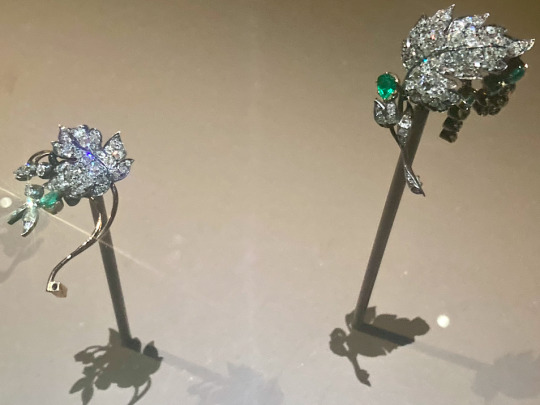

"Ornements de Cheveux" transformables en diadème dit "Leuchtenberg" de Jean-Baptiste Fossin en or, argent, émeraudes et diamants (circa 1830-40) à l'exposition “Végétal” orchestrée par Chaumet à l'Ecole des Beaux-Arts de Paris, juin 2022.
#expos#inspirations bijoux#bijoux de tête#végétal#diamant#emeraude#Fossin#Chaumet#Leuchtenberg#EcoleBeauxArts
0 notes
Note
Hello may I ask you where the portrait of Augusta Amalia von Bayern wearing the cameo tiara can be seen ?
Thanks
I'm not sure, you'll have to ask the original poster @oldtimeroyals. I did a reverse image search and the only place I could find it was a German website with a book review for Napoleons Erben. Die Herzöge von Leuchtenberg (Napoleon's Heirs: The Dukes of Leuchtenberg) by Bernhard Graf with the caption "Auguste Amalie als Vizekönigin von Italien, Ölgemälde eines unbekannten Meisters, nach 1814." It doesn't mention where the original painting is located.
11 notes
·
View notes
Text

Prince Auguste de Beauharnais, Duke of Leuchtenberg. By John Simpson.
4 notes
·
View notes